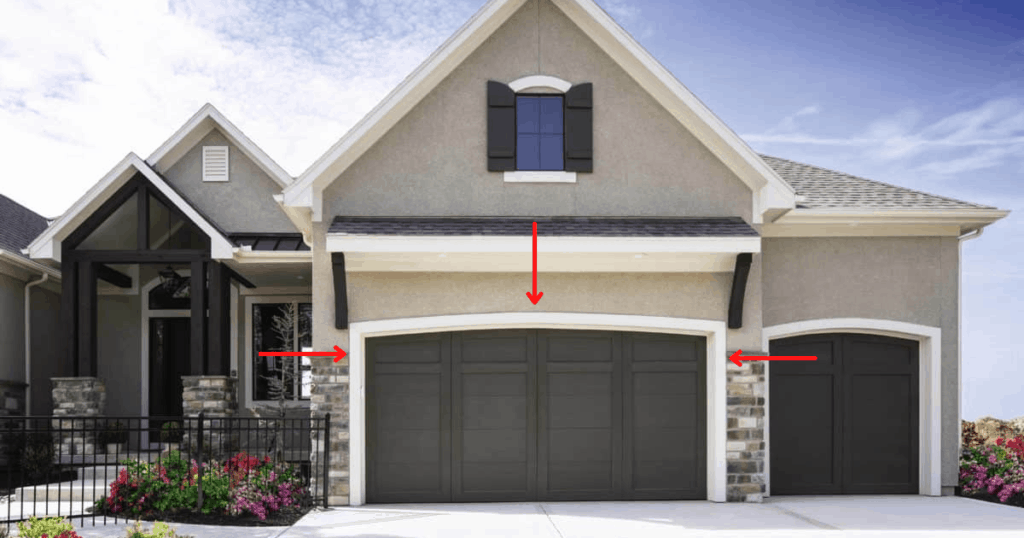A home garage door update typically entails two main phases. First, the homeowner needs to select the door that best fits their aesthetic tastes and their home’s layout. Once a new garage door is selected, an individual will need to frame their garage’s entry ahead of its installation. In the post below, we review how to frame a garage door, as well as some common terminology a homeowner may encounter when speaking with a garage door professional.
What are Rough and Finished Openings?
Two terms that homeowners will hear mentioned when shopping for a new garage door are rough and finished openings. Rough openings are the open space at a garage’s front that is slightly larger than the garage door. This is done to provide enough room for the door to be opened and contain its parts. Finished openings, conversely, are the remaining negative spaces after you have installed the framing. The image below shows a finished opening example.

Five Steps to a Framed Garage Door
Tools You’ll Need
- Tape measure
- Pencil
- Circular saw or bandsaw
- 3 x 2-by-6 inch lumber or PVC pieces (depends on your preference for door jambs)
- Framing nails
- Hammer or nail gun
Note: For the framing materials, make sure to purchase enough lumber for double the length of your garage’s floor-to-ceiling height and double the height of each side of the rough opening. Additionally, materials are needed to line the width of the header and the distance between the header and the ceiling.
Step #1: Measure the Rough Opening
- Use your tape measure to gather the following measurements and write them down:
- The distance between the garage floor and the rough header. It should be one and a half inches longer than your new garage door’s height
- The header’s space; this area should be nine inches wider than the door
- The rough openings’ width; it should be three inches longer than the door
Step #2: Install the Head Jamb
- Installation of the head jamb first ensures the side jambs will be flush against the header
- Cut your framing material to the recorded header size
- Mount your head jamb using framing nails
Step #3: Install Two Interior Side Posts
- Inside your garage, measure the floor to ceiling height
- From your lumber supply, cut two posts that will attach the garage door’s tracks to the wall
- Then, mount these two parts of the “goal post” to the head jamb using framing nails
Step #4: Install the Side Jambs
- Cut two pieces of lumber or PVC door jambs to the new height of your opening
- The side jambs should hit the bottom of the jamb header you’ve already installed and should be the exact height of your garage door minus 1/4 of an inch (just above the ground)
Step #5: Attach the Center Bracket Framing
- Measure the space between the top of the header and the ceiling
- Cut a piece of lumber to this height and center it
- This last piece of framing will be used by a garage door installer to attach a spring system’s center bracket

